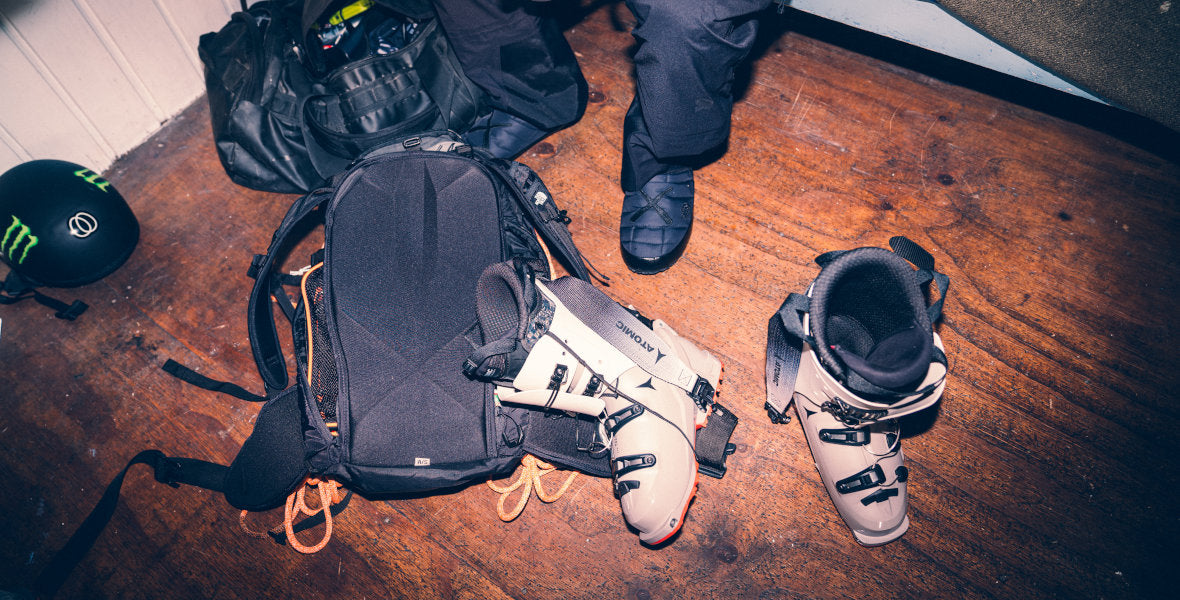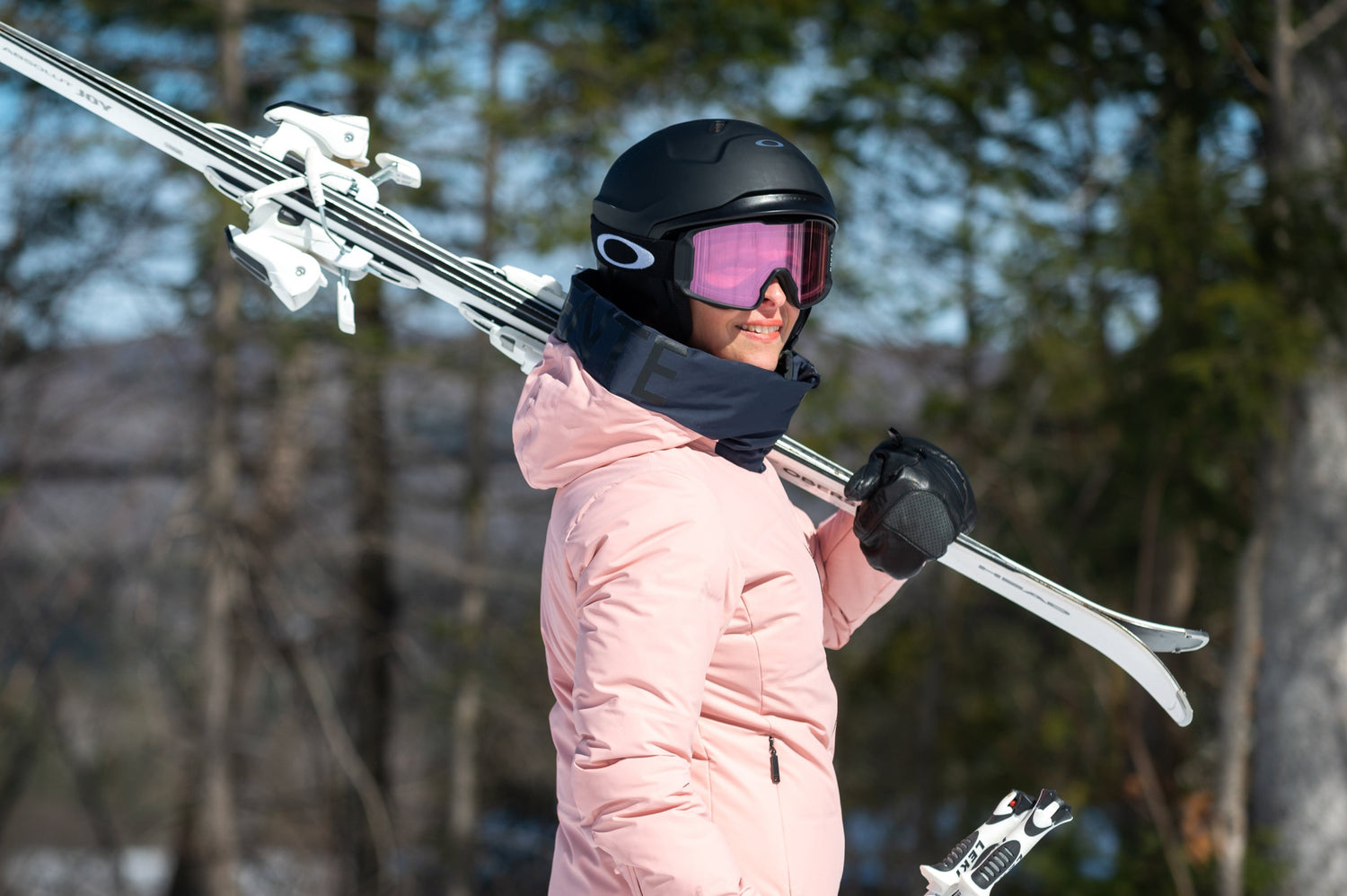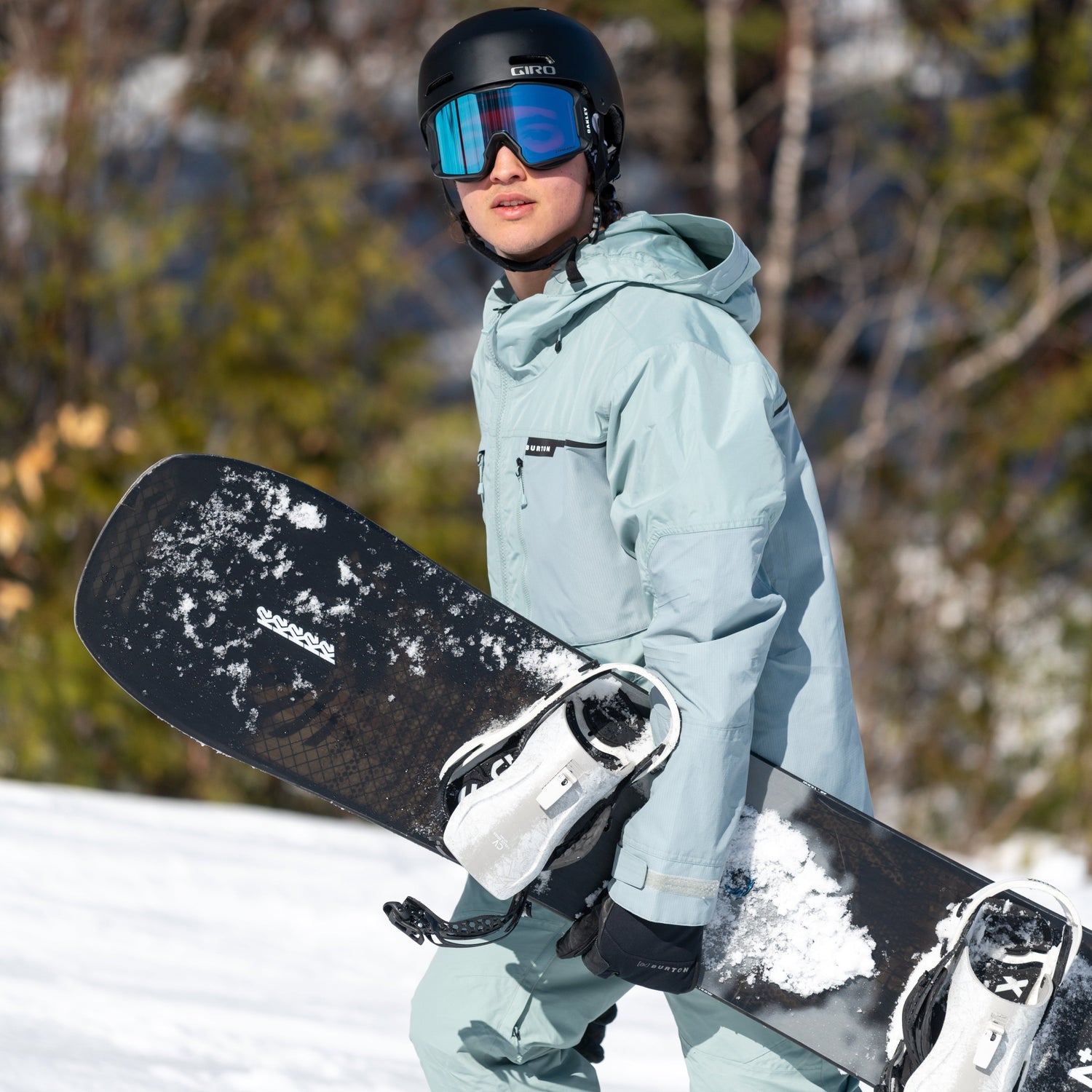1. When should you change ski boots?
Visible Signs That You Need New Boots
The golden rule? Don’t wait for your ski boots to be uncomfortable. A first sign that you need to change your boots is that your liner no longer fits snuggly; this leaves room for your foot to move around, which can cause injuries. Another sign that you need new boots is a shell that has dried out, which means it could crack.
A Ski Boot’s Lifespan
Clearly, a skier who spends three hours on the mountain won’t wear out boots as quickly as one who spends eight hours a day multiple times a week there. In theory, you should get new boots every ten years—more specifically between 120 and 150 ski days.

2. How to measure your feet?
The first step is to measure your feet to analyze their shapes. How to measure your feet? There are two ways to do so.
Having Your Feet Measured in Our Store
We measure your feet using a tool that allows us to take a complete footprint. This enables getting an accurate measurement of each foot’s length, width and arch shape. It’s not uncommon for each foot’s characteristics to be different.
How to measure your feet at home?
- Place a sheet of paper on the floor against a wall.
- Place your foot on the sheet, and press your heel against the wall.
- Bend your knee slightly to reproduce the skiing position.
- To determine length, draw a line in front of the foot at the end of the big toe.
- To determine width, draw a line on both sides of your foot’s widest point—namely, the fifth metatarsal.
- Measure the length between the line and the tip of the sheet adjacent to the wall in centimetres.
- Measure the width of your foot between the two points in centimetres.
- Repeat the steps for your other foot. There are often differences between the two.
- The longest measurement determines your ski boot size.
3. How to size ski boots?
Once your foot has been measured, the length in centimetres will determine the size in Mondos, which is the unit of measurement used for ski boot sizes. You can also refer to a table, such as the one below.
|
Shoe size (US) |
Suggested Boot Size |
MEN |
|
| 4,5 | 22,5 |
| 5 | 23 |
| 5,5 | 23,5 |
| 6 | 24 |
| 6,5 | 24,5 |
| 7 | 25 |
| 7,5 | 25,5 |
| 8 | 26 |
| 8,5 | 26,5 |
| 9 | 27 |
| 9,5 | 27,5 |
| 10 | 28 |
| 10,5 | 28,5 |
| 11 | 29 |
| 11,5 | 29,5 |
| 12 | 30 |
| 12,5 | 30,5 |
| 13 | 31 |
| 13,5 | 31,5 |
| 14 | 32 |
| 14,5 | 32,5 |
| 15 | - |
| 15,5 | - |
WOMEN |
|
| 4,5 | 21,5 |
| 5 | 22 |
| 5,5 | 22,5 |
| 6 | 23 |
| 6,5 | 23,5 |
| 7 | 24 |
| 7,5 | 24,5 |
| 8 | 25 |
| 8,5 | 25,5 |
| 9 | 26 |
| 9,5 | 26,5 |
| 10 | 27 |
| 10,5 | 27,5 |
JUNIOR |
|
| 8 | 14 |
| 8,5 | 14,5 |
| 9 | 15 |
| 9,5 | 15,5 |
| 10 | 16 |
| 10,5 | 16,5 |
| 11 | 17 |
| 11,5 | 17,5 |
| 12 | 18 |
| 12,5 | 18,5 |
| 13 | 19 |
| 13,5 | 19,5 |
4. How to choose a ski boot width?
The width in millimetres when measuring your feet corresponds to one of the three ski boot widths. These different widths fit narrow, medium and wide feet. The term last is often used to define this ski boot characteristic.
Wide — 102 mm to 104 mm
Medium — 100 mm
Narrow — 96 cm to 98 mm

5. How to choose your boots’ flex index?
The flex index refers to a boot’s stiffness: the higher the number, the stiffer the boot. Softer boots are more forgiving and make it easier to initiate and exit turns. Stiffer ones are more responsive, powerful, and precise when controlling your skis.
Soft boots are perfect for beginners because they are comfortable and more forgiving. Otherwise, the right flex depends on multiple factors: your weight, skill level, skiing style, and the type of terrain you usually ski.
Intermediate and advanced skiers often opt for a medium flex, which strikes a balance between responsiveness and comfort. Many park, freeride, and big mountain skiers also prefer this flex. Stiff boots are designed for experienced, heavier, more powerful skiers who want maximum precision at high speeds or on steep, technical terrain. Keep in mind that flex ratings aren’t standardized across brands, so focus on the categories of soft, medium, and stiffThe terrain where you ski is a decisive factor in boot choice. There are different flex indexes for boots—soft, medium and stiff—aimed at different types of skiers.
Softer boots are more forgiving and make turn initiation and release easier, while stiffer ones are more responsive and therefore have both more power and better control over the skis.
Flex Index for Kids’ Ski Boots
There aren’t really flex indexes for young children who wear 14 to 21 in Mondopoint. However, for older kids, boot flex varies from 60 to 90. The more a child grows and his or her level of skiing improves, the more the young skier will need a boot with a flex index in line with his or her progress and desire for performance.

MEN |
WOMEN |
|
Flex 120–130 — Stiff — For expert or tall skiers |
Flex 130 — Stiff — For expert skiers looking for performance |
|
Flex 90–120 — Medium — For intermediate skiers |
Flex 110–120 — Stiff — For advanced to expert skiers |
|
Flex 70–90 — Soft — For beginner or lighter skiers. |
Flex 90–110 — Medium — For intermediate skiers |
|
|
Flex 60–90 — Soft — For beginner skiers |
6. How to adjust ski boots?
It may seem easy, but a well-adjusted boot makes all the difference. First, open the cuff and put on your boot. It doesn’t matter whether you start by attaching the top or bottom buckles.
- Go through once, and fasten all the buckles.
- Go over them again to check that they’re properly fastened.
- Don’t make them too tight.
- The bottom two buckles should be fastened without too much tension.
- The top two buckles can be closed with a bit more tension but without cutting off your circulation. A lack of circulation leads to cold feet.
7. When to use a boot fitting service?
Although the liner usually moulds quite well from the heat of your foot after a few outings, you may feel some pressure points or discomfort. This can even be the case when you’re trying them on in the store. That’s what boot fitting is for!
The shell and liner can be heat-moulded in our store so you can have an optimal experience on the mountain. Always keep in mind that a boot that’s too narrow can be enlarged, but material can’t be added to shrink a boot that’s too wide.
To learn more about this technique, check out our article Boot Fitting: All You Need to Know.

8. What are the key alpine ski boot technologies?
The BOA fit system
Introduced to alpine ski boots in 2023, the BOA system has revolutionized how boots fit. Like its serpentine namesake, it wraps around the foot using a micro-adjustable cable controlled by a dial. The system has many advantages. Instead of clamping the foot like traditional buckles, it provides an even, customizable fit that enhances your comfort. Even with less pressure on the foot, this more precise fit improves power transfer in turn initiations. And because it’s lighter, it reduces fatigue and increases agility on the slopes.
Learn more about this new technology in our article about BOA ski boots.

Power strap
The power strap tightens the top of the cuff. It reduces play between the shin, cuff, and tongue for a more precise, comfortable fit, which improves power transfer.
Heat-mouldable liner
Many ski boots now feature heat-mouldable liners that conform to your foot’s shape when heated. This results in increased comfort and better support.
GripWalk soles
GripWalk soles enhance comfort and safety when walking in alpine ski boots. With their rockered shape and high-traction rubber, they provide better grip on icy or wet surfaces. They promote a more natural stride and reduce the risk of slipping. Plus, the areas in contact with the binding at the heel and toe ensure optimal power transfer. Just make sure your bindings are GripWalk-compatible—look for the official GripWalk logo.

Frequently Asked Questions about Choosing Alpine Ski Boots
1. Which ski boots are best for those with big calves?
2. Which ski boots are best for those with wide feet?
3. How should your foot fit a ski boot?
Just because you have a wide foot doesn’t mean you need bigger boots. The foot should fit as snuggly as possible without any discomfort. Sometimes slight discomfort can be worked on with a boot fitting.
4. How to put on an alpine ski boot?
- First open the buckles.
- Open the shell.
- Slip your foot into the liner.
- Close the buckles by following the steps to adjust an alpine ski boot (above).


